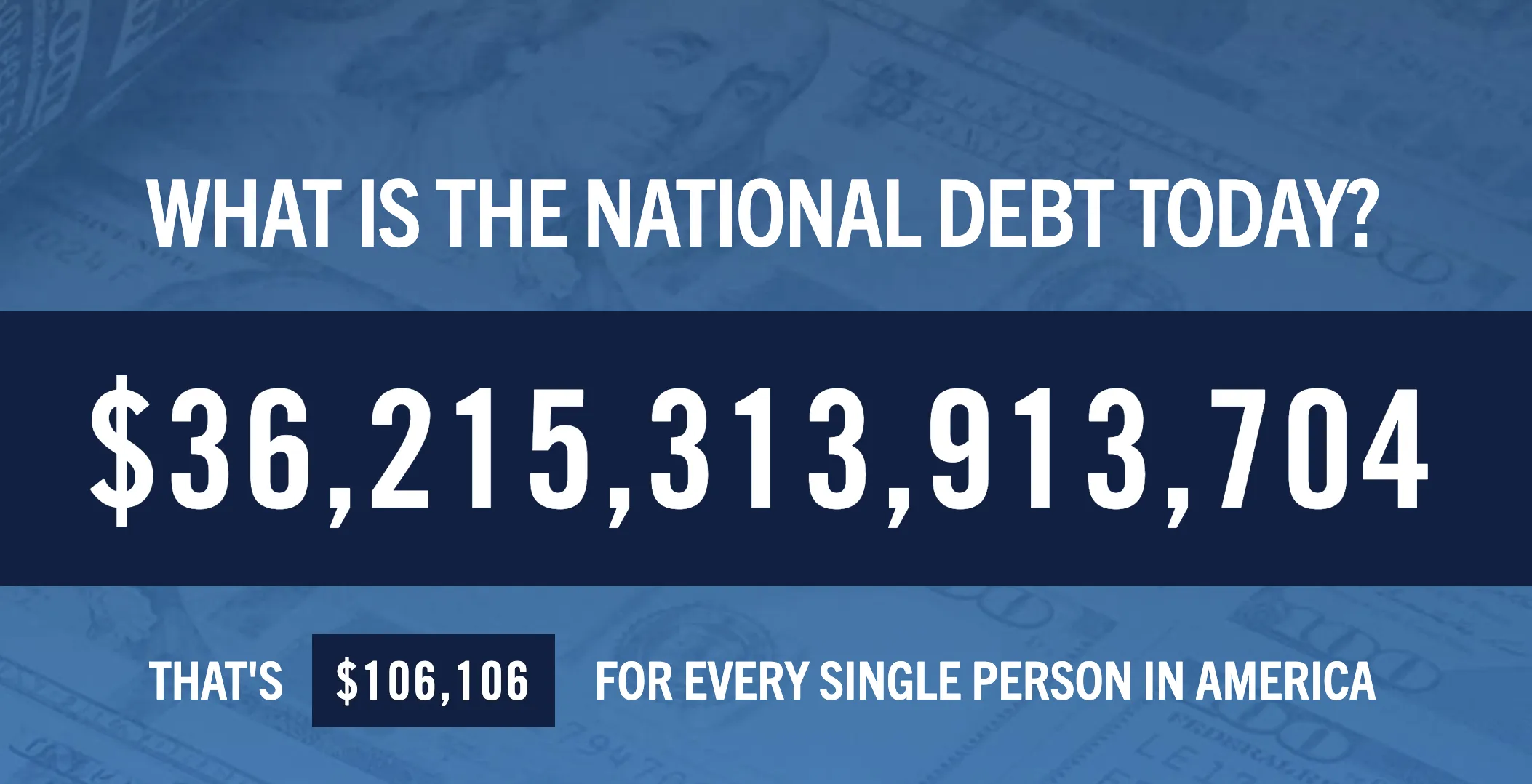-
US raises debt ceiling to over $36.2 trillion, easing short-term default fears but fueling concerns over long-term fiscal sustainability.
-
Short-term confidence in traditional assets may suppress Bitcoin, but yuan weakness and inflation risks support long-term crypto growth.
-
Cryptocurrencies gain appeal as inflation hedges, with Bitcoin seen as “digital gold” amid rising US debt and global economic volatility.
As the US debt exceeds $36 trillion, concerns linger about long-term fiscal health, while Bitcoin finds renewed interest as an inflation hedge.
US Debt Ceiling Increase
The recent increase in the US debt ceiling has reignited debates regarding fiscal responsibility and sustainable economic practices. While it temporarily avoids a financial default, questions remain about the implications for long-term economic stability and the impact on alternative assets like cryptocurrencies.

U.S. debt. Source: PGPF
According to data from the Senate Joint Economic Committee (JEC), the US national debt has surpassed $36.2 trillion as of April 2025. This mounting figure, a considerable increase from $22 trillion in March 2019, underscores the ongoing escalation of the national debt. Historical patterns show Congress has had to adjust the debt ceiling frequently, reflecting a persistent need to accommodate government obligations while raising alarm bells about future repayment capabilities.
The political climate surrounding debt ceiling increases is typically contentious. For instance, during President Donald Trump’s administration, measures included substantial tariffs aimed at channeling revenue towards reducing debt, which has had a cascading effect on trade relationships and currency valuations. Consequently, the Chinese yuan (CNY) has plummeted to an 18-year low, stirring up dynamics in both the forex market and the cryptocurrency landscape.
Impact on Crypto
The implications of the debt ceiling increase extend into the cryptocurrency market, offering a mixed bag of potential outcomes. In the short term, the elevation of the debt ceiling may ease fears of default, boosting investor confidence in conventional markets and thus potentially decreasing interest in Bitcoin and other cryptocurrencies traditionally viewed as safe havens.
Past trends reveal that during debt ceiling crises, like the one experienced in 2021, Bitcoin prices often surged in response to fears of governmental default. However, once the crisis was resolved, there was a marked shift as investors diversified back into traditional assets, leading to price corrections in Bitcoin.
Moreover, a depreciated yuan could compel Chinese investors to seek refuge in cryptocurrencies, enhancing demand and stability for digital assets. This migration may offset any short-term declines influenced by traditional market confidence.
The ongoing trend of raising the debt ceiling often results in increased money supply through additional government borrowing and spending, fostering inflationary pressures that diminish the dollar’s purchasing power. In this environment, cryptocurrencies, especially Bitcoin, are increasingly regarded as viable inflation hedges. As inflation persists, the perceived value of Bitcoin as “digital gold” is expected to grow, attracting a new wave of investors seeking to protect their wealth.
While the immediate reaction to the debt ceiling hike may result in diminished demand for Bitcoin as conventional market confidence rises, the long-term ramifications could foster a surge in interest towards cryptocurrencies. Persistent hikes may catalyze inflationary trends, further solidifying cryptocurrencies in the investor’s portfolio as alternatives against devaluation.
Conclusion
In conclusion, the recent increase in the US debt ceiling poses significant implications for both traditional financial markets and cryptocurrencies. While it alleviates concerns of a short-term default, the overarching issue of fiscal sustainability remains vital. Investors may initially shift focus to traditional assets; however, as inflation and economic challenges persist, Bitcoin and other digital currencies are poised to reclaim their roles as essential hedges against currency devaluation. The market will require vigilance as these developments unfold, emphasizing the need for informed investment strategies.
